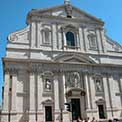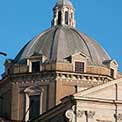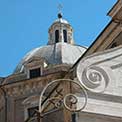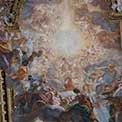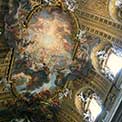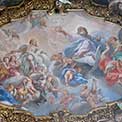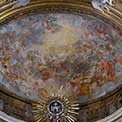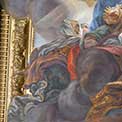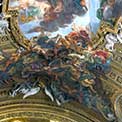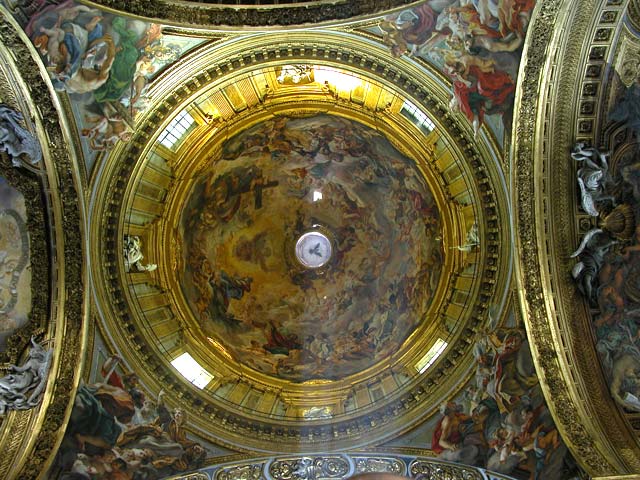
This church is close to the Corso, and a little north of the Capitoline Hill. It is similar in plan to Sant Ignazio, and was commenced in 1575, from the designs of Vignola, but the facade and cupola were the work of Giacomo della Porta. The length of this grandiose specimen of Revived Classical is about 200 feet, the width of the nave about 50 feet, and the height about 90, all of which proportions may be pronounced very pleasing. Nor is the colour scheme less satisfactory, marble and scagliola playing an important part in its interior decoration. One of the principal objects of attraction here is the altar of St Ignatius, designed by the Andrea Pozzo alluded to in the description of the church dedicated to that saint. It is chiefly of polished marbles of the rarest description, with a large central niche containing a statue of St Ignatius, and adorned at the top with a marble group emblematical of the Holy Trinity. On each side of the altar are large allegorical groups, also in marble, one representing the Triumph of Religion over Heresy and the other Christianity embraced by barbarous Nations. These are from the chisels of Theodore and Le Gros. This altar-piece in the Gesu is perhaps the most sumptuous specimen of Jesuit architecture of its kind extant.
In the opposite transept is the altar of St Francis Xavier, with a reredos of similar description from the designs of Pietro da Cortona, surmounted, within the broken pediment, by a group representing the Apotheosis of the Apostle of the Indies.
The accompanying illustration of this chastely beautiful altar-piece, together with the organ in the attic of the transept, is taken from a fine pencil drawing by Jourdan, engraved by Bury, and published by Gailhabaud in the fourth volume of his Monuments Anciens et Modernes, and conveys a far better idea of the ensemble than a lengthy description.
The broad and lofty nave of the Gesu, and the aisles converted into chapels, introduced a new phase in the development of Roman Catholic church architecture; its architect, Vignola, furnishing the type of the style which prevailed during the following century, especially in the numberless Jesuit churches then built. Together with Borromini, Fontana and Maderno, the architect of II Gesu was a pioneer in that band of artists who conspired to rob architecture of its fitting repose, and by the introduction of figures posed in startling attitudes, aroused or convulsed by unseen agency, of curves instead of straight lines, of pillar piled upon pillar, substituted a turbulent unrest.
That the style produced a striking and artistic effect there can be no doubt, and one that may appeal to some minds. An undoubted vigour in the disposition of detail, a feeling for vastness and pomp, allied with an internal decoration which spared neither colour nor costly material to secure an effect of dazzling splendour, such are the distinguishing attributes of what may be styled the " baroque " phase of the Classical Revival, as is to be seen in Rome on every hand, in an endless succession of churches, among which may be named Sant' Andrea della Valle, San Carlo alle Quattro Fontane, and the one of which the above is some description.
THE CATHEDRALS AND CHURCHES OF ROME AND SOUTHERN ITALY By T. Francis Bumpus.
LONDON - T. WERNER LAURIE - CLIFFORD'S INN

